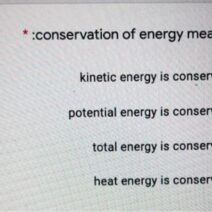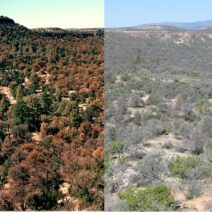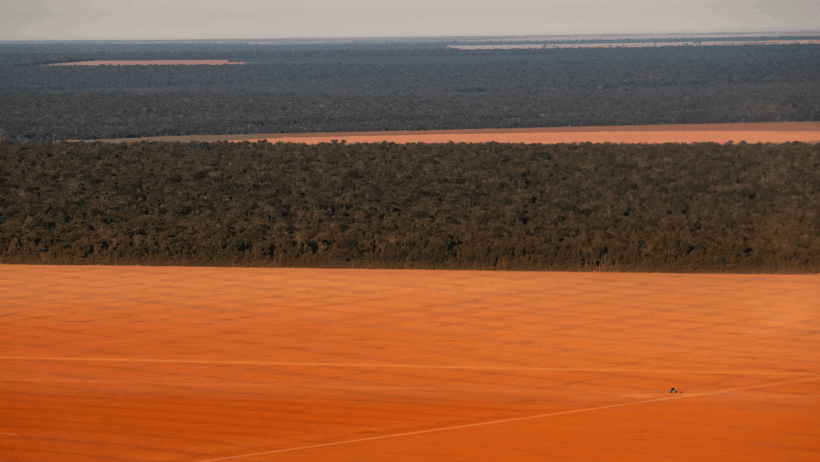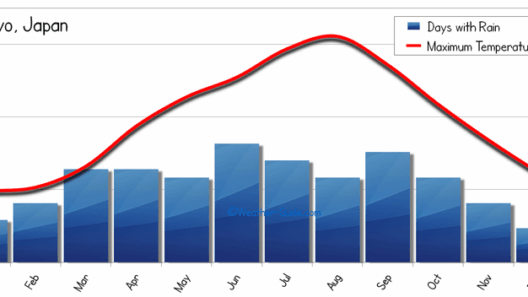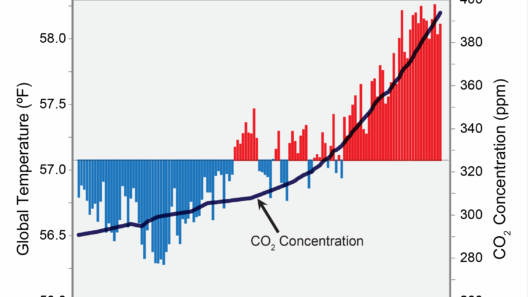Imagine a world where the trees speak, whispering tales of the carbon they once absorbed and the intricate ecosystems they supported. What would they say about the relentless chainsaws that echo through their lush canopies? In “Cutting Down the Future: How Deforestation Drives Climate Change,” we delve into the myriad consequences of deforestation, elucidating its undeniable link to climate change and challenging us to confront our own complicity. This endeavor is not merely an academic exploration; it is an urgent call to action.
Deforestation, defined as the permanent removal of trees and forested areas, represents a significant environmental crisis. Global forest cover is diminishing at an alarming rate, primarily due to agricultural expansion, logging activities, and infrastructural development. According to recent statistics, approximately 18 million acres of forest are lost annually, a stunning figure that translates to about 27 soccer fields every minute. This loss is not only an ecological disaster but also a harbinger of dire consequences for the climate.
One might ponder: why are trees so crucial to our climate? The answer lies in the intricate role trees play in the carbon cycle. Forests act as carbon sinks, absorbing carbon dioxide (CO2) from the atmosphere and storing it in their biomass. When trees are felled, not only does this carbon absorption cease, but the stored carbon is released back into the atmosphere, exacerbating greenhouse gas concentrations and accelerating global warming.
As the climate warms, we witness a cascade of environmental degradation. Rising temperatures lead to altered weather patterns, increased frequency and severity of droughts, and the proliferation of wildfires. The cycle perpetuates itself; as forests vanish, the land becomes more susceptible to these extremes. This creates a feedback loop that intensifies climate change, making it imperative to understand how such dynamics unfold.
Additionally, deforestation infringes upon biodiversity. Forests are home to nearly 80% of terrestrial species. The rapid loss of habitat leads to the extinction of countless organisms, disrupting ecosystems that have evolved over millennia. Biodiversity is not merely an environmental concern; it is fundamentally tied to human health and wellbeing. The loss of plant species, for instance, can thwart potential medical breakthroughs derived from natural substances.
Another consequential reality is the effect of deforestation on indigenous communities. Many indigenous peoples rely on forests for their livelihoods, culture, and identity. The destruction of these habitats not only displaces these communities but also erodes their cultural heritage, as traditional knowledge and practices intimately connected to the land are lost forever. This moral dimension of deforestation raises profound ethical questions about our responsibility to both people and the planet.
To combat the relentless tide of deforestation, comprehensive strategies must be employed. Sustainable forestry practices, reforestation, and afforestation are pivotal components of a multifaceted approach. Regenerative agriculture offers a sustainable alternative to conventional farming, integrating crop production with forest preservation. This not only helps sequester carbon but also improves soil health and yields, demonstrating that environmental stewardship and agricultural productivity can coexist harmoniously.
Policy initiatives play an instrumental role in combatting deforestation. Governance frameworks must prioritize the protection of forests, establishing legally binding commitments to reduce deforestation rates and incentivize sustainable land use. Additionally, international cooperation is crucial. Global agreements, such as the Paris Agreement, underscore the necessity of collective action in addressing climate change and preserving forests as pivotal pillars of this struggle.
Public awareness and engagement are equally critical. Empowering individuals to make informed choices regarding consumption can have substantial effects. The demand for sustainably sourced products can drive market changes that benefit both the environment and local communities. Furthermore, educational campaigns underscoring the value of forests can galvanize grassroots movements aimed at protection and restoration efforts.
Yet, the challenge remains formidable. The intricate dance between economic development and environmental preservation poses a dilemma. Transitioning from traditional resource extraction to sustainable practices necessitates significant investment and systematic change. Can we collectively envision a future where economic growth does not come at the expense of our planet’s lungs?
Maintaining the momentum for reforestation and sustainable practices requires the solidarity of diverse sectors—government, private enterprise, nonprofit organizations, and citizens alike. We must embrace innovative solutions that transcend traditional paradigms, viewing forests not just as resources to exploit but as invaluable ecosystems deserving protection. This shift in mindset is crucial in thwarting climate change and ensuring a healthier future.
Ultimately, as we confront the reality of deforestation and its repercussions, we are called to act—individually and collectively. The question remains: What will we choose to do as stewards of our environment? Will we allow the chainsaws to continue their relentless work, dismantling our shared future? The fate of our planet rests in our hands, urging us to prioritize the preservation of forests and embrace a more sustainable paradigm. Together, we can cultivate a world where trees stand tall, sustaining life and nurturing the planet for generations to come.
